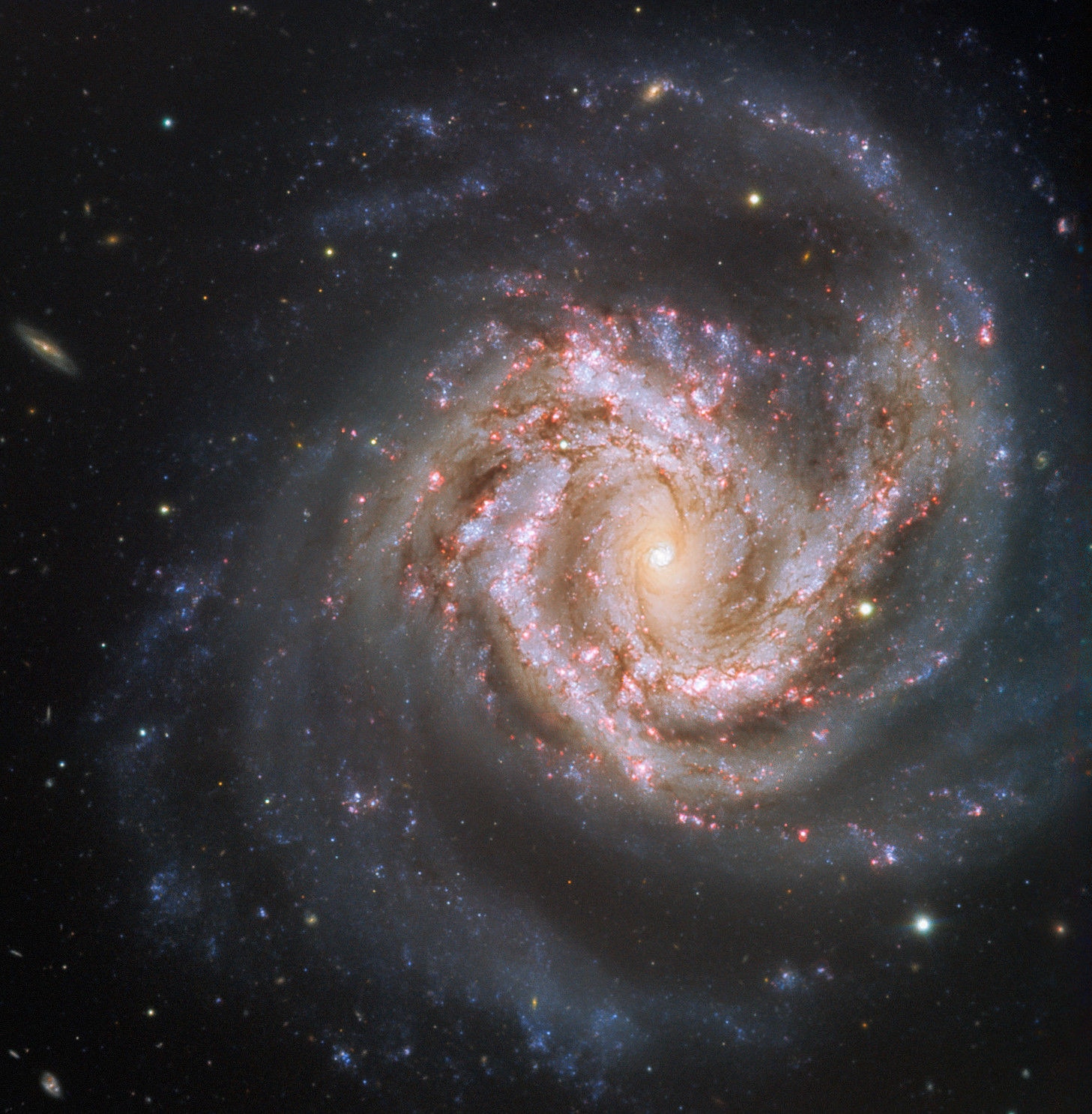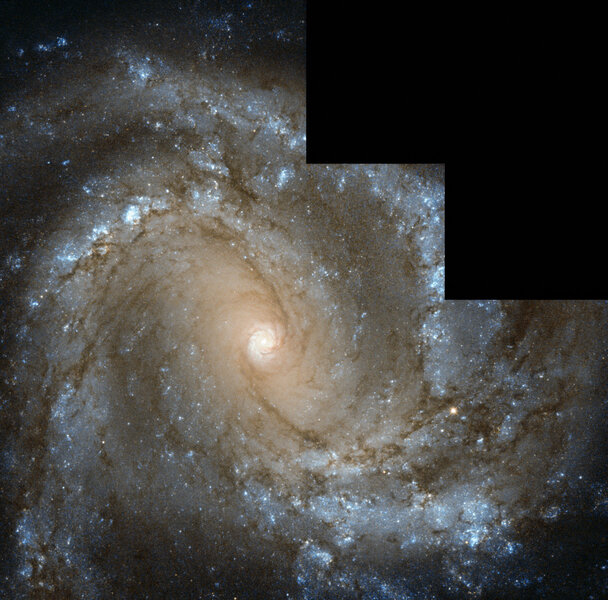Create a free profile to get unlimited access to exclusive videos, sweepstakes, and more!
Facing the incomprehensible beauty of M 61

Messier 61 is a galaxy that’s got it all.
I mean, c’mon. <ticks off fingers> Face-on spiral, sits in the nearest galaxy cluster to us, tons of beautiful nebulae, copious star formation, (mildly) active black hole in its core, massive star cluster sitting near that black hole, overachieving number of supernovae, and was discovered by two people on the same night except one of them very ironically thought it was a comet.
That enough for you? Let’s proceed.
Messier 61, aka M61, is a galaxy a lot like our own. It’s a spiral, roughly 100,000 light years across, with a bar (an elongated lozenge-shaped structure of stars) in its middle. It’s about 52 million light years away and is a resident of the Virgo Cluster, a sprawling collection of well over a thousand galaxies. That cluster is the center of the much larger Virgo Supercluster, which has tens of thousands of galaxies in it … including our own. So we and M61 are neighbors.
But of course you want to see it, right? Oh my yes, you do:
This gorgeousity was taken with one of the four 8.2-meter Very Large Telescope Unit Telescopes (together, the 4 UTs make up the VLT), using a camera called the FOcal Reducer and low dispersion Spectrograph 2, or FORS2, which allows the telescope to capture wide-angle shots of the sky. The image is a combination of three color filters (red, green, and blue) to mimic natural color, plus an extra layer using an H-alpha filter, which emphasizes the light from warm hydrogen.
The blue glow is the combined light of millions of high-mass, luminous stars, much brighter and hotter than the Sun. There are far fewer of them in the galaxy than lower-mass stars, but they are so bright they outshine the others. They also trace out the curved majestic spiral arms of M61; these stars are born in those arms and don’t live long, so their distribution is the same as the arms themselves.
You can see lots of pinkish-red blobs dotting the arms, too: Those are gigantic gas clouds called nebulae, from which stars are born. The stars warm the gas, causing it glow red, and the H-alpha filter really brings them out in the image.
I was amazed at the sheer number of nebulae in M61 when I saw this image, so I wasn’t surprised to find out it’s what’s called a starburst galaxy, making stars at a much higher rate than average. Once I knew that I wasn’t surprised to find there have been an unusual number of supernovae, exploding stars, seen in M61 too. If you make lots of high-mass stars they’re gonna die eventually, and when they do, bang!
Speaking of which, very near the center of M61 is a super star cluster, a stellar beehive of thousands of stars blasting out huge amounts of light, over 100 million times the Sun’s energy emission! The cluster is only a few dozen light years out from the core, which is interesting indeed: Right at the heart of the galaxy is a supermassive black hole — every big galaxy has one, including ours — so this cluster managed to form very close to this monster. The cluster looks to have been born in a vast burst of star formation about 4 million years ago.
In many galaxies where the black hole is gobbling down material, the core appears very bright, especially at colors of light like ultraviolet. It was always assumed that was the case for M61, but in fact the black hole is only a weak source of emission. The super star cluster dominates the UV emission! So it’s quite a beast.
M61 is close enough to Earth to see with binoculars. It was discovered by astronomer Barnabus Oriani on May 5, 1779. But there’s a twist: French comet hunter Charles Messier also saw it on the very same night! However, at the time, Messier though it was a comet … reasonably, as it turns out, because the Great Comet of 1779 passed right over the position of M61 at that time. Messier logged observations of M61 on the 6th and 11th of May as well, and it wasn’t until that last one that he realized he wasn’t seeing a comet.
The irony of this makes me chuckle. Messier loved finding comets (he discovered over a dozen), so much so that other fuzzy blobs in the sky irritated him. He started a catalog of them that he first published in 1774, and updated a few times. The Messier Catalog, as we now call it, contains some of the brightest and most adored objects in the sky to see with small telescopes: star ers, nebulae, and galaxies … including M61.
So he literally mistook the galaxy for a comet, years after he started his catalog to help him not mistake objects for comets, and he wasn’t the first one to see it, yet it bears his name to this day despite actively seeking to avoid observing it!
I’ll be honest; I had never heard of Oriani until researching this, but I’ve seen nearly every Messier object in the sky myself. Every amateur astronomer knows Messier’s name. Fame is weird.
So while Messier died in 1817, his name does indeed live on, as does M61. It will continue to delight astronomers for centuries upon centuries to come, and the galaxy itself will happily crank out stars and do its galactic thing for eons. Not a bad legacy for a guy who didn’t want to see it.
















